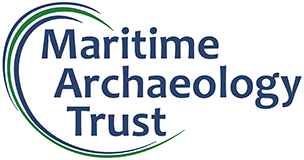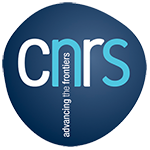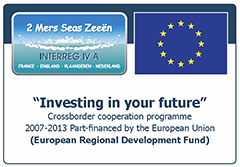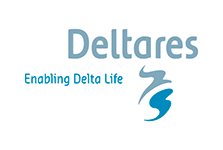
Introduction
Welcome to the Arch-Manche online open viewer
The Arch-Manche project aims to demonstrate how archaeological and palaeoenvironmental data can be used along with artistic representations of the coast in order to improve our understanding of coastal change and the impacts on human settlement.
This public database enables coastal managers and interested individuals to see a spatial view of coastal change evidence generated by the project, including paintings, maps, charts and historic photographs, as well as a wealth of archaeological and paleoenvironmental evidence. The data has been ranked based on its potential to provide detailed, reliable and accurate information about how the coast has changed. The results of this is reflected through the size and colour of the icons used for each data set. For details on the data, the results as well as help and FAQ click on the sections below.
The Project Partners

The Maritime Archaeology Trust is a charity based in the UK, which specialises in the study of maritime archaeology and its effective communication to the public. Located in Southampton, the Trust undertakes a diverse range of international research projects. The Maritime Archaeology Trust is the lead partner in the Arch-Manche project, and therefore have a major role in all of the Activities.

The Belgian team are from the Department of Geology and Soil Science, Ghent University, and are specialists in geology, geophysics, marine and coastal environments, data processing, and interpretation and visualisation. The team has a solid international reputation in the design and application of remote sensing techniques in the offshore/nearshore/coastal environments. For the Arch-Manche project this team was strengthened by archaeologists from the Department of Archaeology, Research Unit of Prehistory and Protohistory, Ghent University, who have expert knowledge in wetland archaeological research and buried palaeolandscape studies.

The Centre National de la Recherche Scientifique are a large research body in France, the Arch-Manche team work within CReAAH, which is a department within the CNRS that specialises in archaeology and archaeosciences in the north-western part of France. The team has extensive experience in international and collaborative projects including coastal and island excavations and survey projects.
The Data
Alongside these you will also see Landscape Reconstructions in the Legend Box. Here is a map view of the main coastal morphology, please note this is to a large scale and only reflects predominant geomorphological features for the area. In this tab you can also see the 2,3 and 4D landscape reconstruction models created for several of the case study areas.
Results
Alongside the Technical Report the partners have produced - 'Coastal Management: A Guide to using archaeological, palaeoenvironmental, historical and artistic resources'. Click here to download a pdf or to request a hard copy please email us.
In four case study areas the results have been used to create 2,3 and 4D models which demonstrate how these areas have changed in the past. Tick the Landscape Reconstructions box on the legend to view the 2D models and the Special Features button to view the 3/4D models.
Help & FAQ
Measure Tool - If you wish to measure the plan at any time you can use the 'Measure' tool
Other Zoom Tools -
Zoom Initial View -
Pan Map -
What is the Arch-Manche project?
The Arch-Manche project, funded by the European Regional Development Fund, is a three year project between the Maritime Archaeology Trust in the UK, CNRS in France, the University of Ghent in Belgium and Deltares in the Netherlands. The project demonstrates how archaeology, coastal heritage features and artistic depictions can provide unparalleled insight into the scale and rate of coastal change. For more information see the Technical Report and the Guide.
What can this data tell us about changes to the coast?
Below are details of the main datasets used and what they can tell us:
Palaeoenvironmental data - provides evidence of past landscapes from early prehistoric times through to the present. Analysis reveals evidence of the environment including plants, animals and insects, the types of soils, and whether it was dry, damp or wet, saline or brackish. Recording changes to these environments demonstrates the impact of rising or falling sea levels and relationships with coastal adaptation.
Archaeology - humans have used the coastal zone for thousands of years. The position of settlements shows the proximity to coastal areas, meanwhile specific features like trackways to cross marshy areas show adaptations to marine environments. Studying the archaeological record can demonstrate how humans adapted to change, and in more recent time, how they effected change.
Maps and charts - contain a record of territories and boundaries and reflect growing techniques and methods for measuring the landscape, coast and seascape. Detailed depictions of the coastal area provide evidence of change from the 16th century to the present.
Art - paintings, drawings and prints of the coast can be very detailed showing the form and composition of coastal areas. These depictions, particularly prior to photography, give unique opportunities to examine coastal areas for data related to physical, environmental and social change.
Photographs - from the earliest examples of photography coastal views have been popular scenes, becoming frequently used for tourist postcards. Early photographs provide data on the coast which can be directly compared to the present day to reveal changes.
How can I view the data in the Geoportal?
On the left hand side of the screen you will see the 'Legend' Box, here you can tick or untick the data that you would like to see. You can then zoom in on a site or image and select it, this will then bring up further information in the Selection box, if you hover over it you can see a summary, and where we have copyright you can also see a thumbnail of images, where the website of the data source is known you can click on the link to open the source in a new window.
Click here for a video tutorial on how to use the portal.
What do the different sizes and colours of the shapes mean?
Each data set is represented by a different shape [ADD KEY HERE]. The size and the colour reflect the results of the ranking. For more information about the methodology used to rank the data click here.
Why rank the data?
The key advantages of using a ranking approach as a tool to inform on coastal change were:
- To present an overview of archaeology, palaeoenvironmental, artistic and photographic evidence against a common standard.
- To provide an indication of the potential of sites, deposits and data sources to inform on coastal change in an accountable and transparent way.
- To provide statistical comparison between sites and data sources enabling coastal managers to prioritise investigations for management purposes.
- To articulate the potential of the archaeology, palaeoenvironmental, artistic and photographic evidence to a non-specialist audience.
[tutorial coming soon]
Why do some records show an image when I hover over and some don't?
We do not have copyright for all of the artworks, photographs and maps, so we cannot add a thumbnail. However if there is a website for the source of the data you will see a link for further information, this will open the source in a new window.
Can I change the basemap?
Yes, there are several options for the basemaps. Click on External Providers in the top left corner of the portal where you can choose either Google, Bing Maps or Open Street Map.
For further information about the project please visit the project web-site or contact the Maritime Archaeology Trust.



